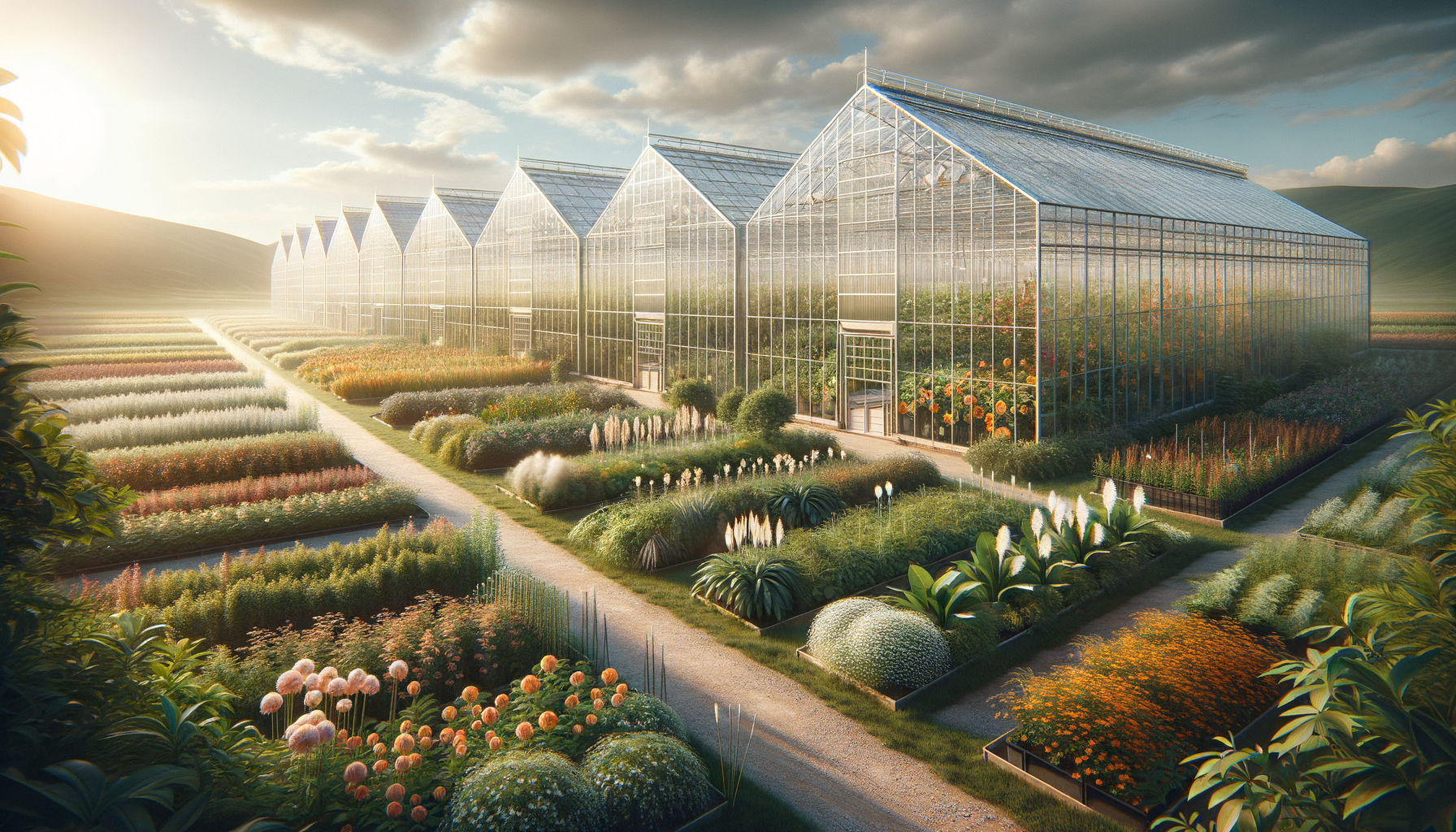Understanding Commercial Greenhouses
Commercial greenhouses play a vital role in modern agriculture by providing controlled environments for growing plants. These structures are designed to optimize plant growth by regulating temperature, humidity, and light. Understanding the purpose and functionality of commercial greenhouses is crucial before making a purchase.
Commercial greenhouses come in various sizes and designs, tailored to different agricultural needs. They can be used to extend growing seasons, protect plants from adverse weather, and improve crop yields. The materials used in construction, such as glass, polycarbonate, or polyethylene, each offer different benefits in terms of insulation, durability, and cost.
When considering a commercial greenhouse, it’s essential to assess your specific needs. Are you looking to grow seasonal vegetables, flowers, or exotic plants? Each type of plant may require different environmental conditions, and understanding these needs will guide your choice of greenhouse type.
Key features to consider include:
- Ventilation systems to control humidity and temperature.
- Heating systems for colder climates.
- Automated systems for watering and lighting.
- Durability of materials against local weather conditions.
By understanding the basics of commercial greenhouses, you can make informed decisions that align with your agricultural goals.
Types of Commercial Greenhouses
There are several types of commercial greenhouses available, each with unique features and benefits. Choosing the right type depends on your specific needs and the climate of your location. Here are some common types:
Gable Greenhouses: These are among the most popular designs, characterized by their triangular roof shape. They provide excellent sunlight exposure and are ideal for regions with heavy snowfall, as the sloped roof allows snow to slide off easily.
Quonset Greenhouses: Known for their semi-circular shape, Quonset greenhouses are cost-effective and easy to construct. They are suitable for areas with mild climates but may require additional support in regions with heavy snow or wind.
Gothic Arch Greenhouses: Similar to Quonset but with a pointed arch, these greenhouses are aesthetically pleasing and offer better snow shedding capability. They are a great choice for those looking for a blend of form and function.
Lean-to Greenhouses: These structures are attached to an existing building, making them space-efficient. They benefit from the building’s heat and are suitable for small-scale operations or hobbyists.
Each type offers distinct advantages, and understanding these can help you select a greenhouse that best suits your needs and budget.
Factors to Consider When Choosing a Greenhouse
When purchasing a commercial greenhouse, several factors should be considered to ensure it meets your needs and provides a good return on investment.
Location and Climate: The location of your greenhouse will influence its design and the materials used. Consider factors such as wind patterns, sunlight exposure, and local climate conditions. A greenhouse in a windy area may require more robust construction, while one in a sunny location might need shading solutions.
Size and Scale: Determine the scale of your operations. Are you planning a small-scale hobby farm or a large commercial enterprise? The size of your greenhouse should accommodate your current needs while allowing for future expansion.
Budget: Greenhouses can vary significantly in price based on size, materials, and features. Establish a budget that balances your needs with your financial capabilities. Remember to account for additional costs such as installation, maintenance, and utilities.
Technology and Automation: Modern greenhouses often incorporate technology to enhance efficiency. Consider investing in automated systems for irrigation, climate control, and lighting to reduce labor costs and improve productivity.
By carefully evaluating these factors, you can select a greenhouse that aligns with your agricultural objectives and budgetary constraints.
Finding Commercial Greenhouses Near You
Locating commercial greenhouses near your area can be a practical approach to understanding the options available and getting a firsthand look at different models. Here are some strategies to help you find them:
Online Directories and Maps: Utilize online directories and mapping services to search for greenhouse suppliers and manufacturers in your vicinity. These platforms often provide contact information, customer reviews, and product offerings.
Local Agricultural Shows and Expos: Attending local agricultural events can be an excellent way to connect with greenhouse suppliers and see their products in action. These events often feature demonstrations, allowing you to ask questions and gather insights from industry experts.
Networking with Local Farmers: Building relationships with local farmers can provide valuable recommendations and firsthand experiences with different greenhouse models. Farmers can offer insights into the performance and reliability of various designs in your specific climate.
By exploring these avenues, you can identify top-rated commercial greenhouses near you and make an informed decision based on real-world feedback and demonstrations.
Conclusion: Making an Informed Greenhouse Purchase
Investing in a commercial greenhouse is a significant decision that requires careful consideration of various factors, from the type of greenhouse to its location and technological features. By understanding the different types of greenhouses and evaluating your specific needs, you can select a structure that will enhance your agricultural productivity.
Remember to leverage local resources and networks to find reputable greenhouse suppliers near you. By doing so, you can gain valuable insights and make a purchase that aligns with your goals and budget.
Ultimately, a well-chosen greenhouse can provide a controlled environment that maximizes plant growth, extends growing seasons, and contributes to the success of your agricultural endeavors.




Leave a Reply